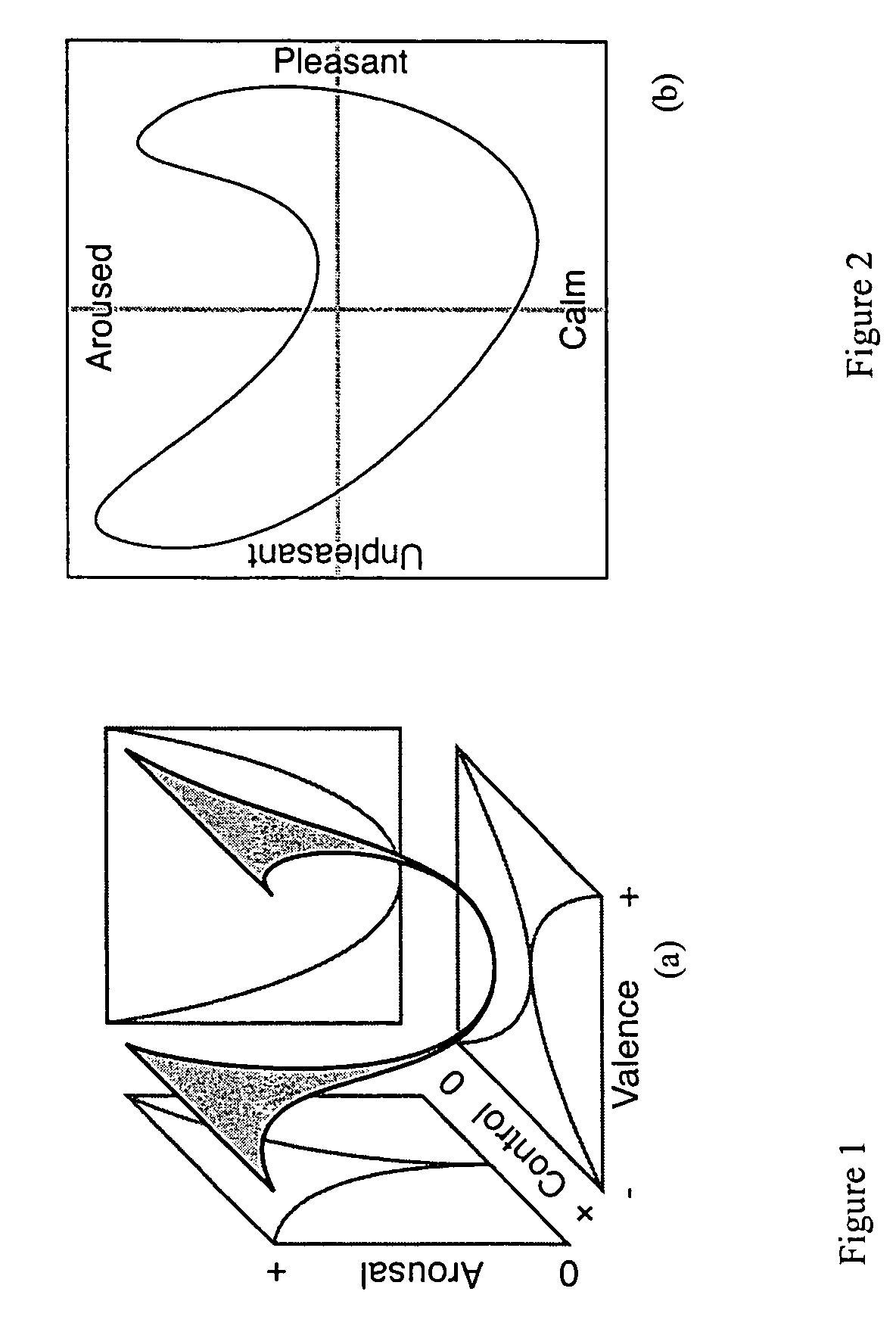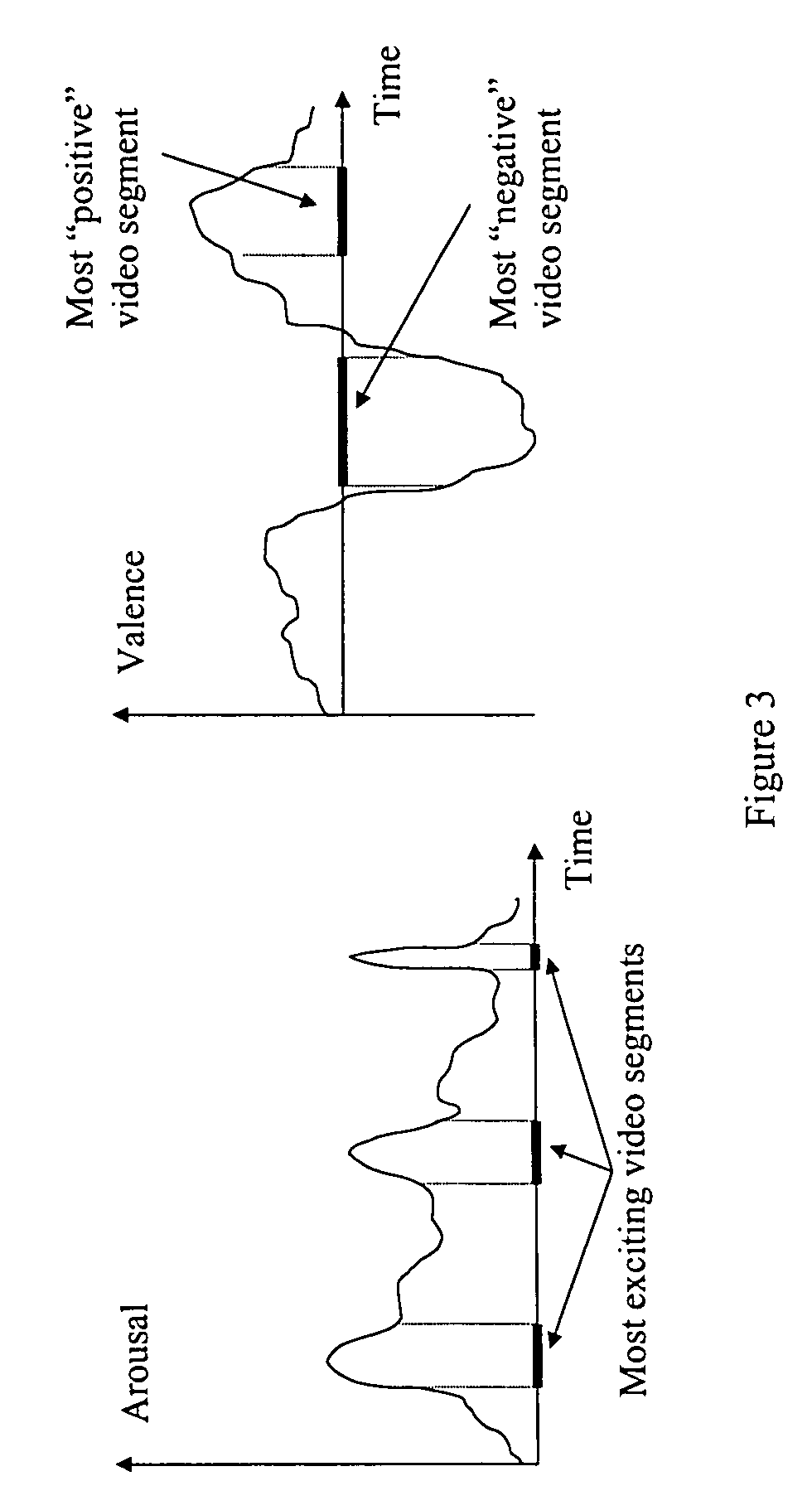Image processing for analyzing video content
a video content and image processing technology, applied in the field of image processing for analyzing video content, can solve the problem that the known algorithm does not address video analysis at the third, affective level
- Summary
- Abstract
- Description
- Claims
- Application Information
AI Technical Summary
Benefits of technology
Problems solved by technology
Method used
Image
Examples
Embodiment Construction
[0032]Firstly, in order to understand the invention a short description relating to “affect”, used in this description to mean emotion or feeling, follows.
[0033]Affect may be defined using three basic underlying dimensions:[0034]Valence (V)[0035]Arousal (A)[0036]Control (Dominance) (C)
[0037]Valence is typically characterised as a continuous range of affective responses extending from pleasant or “positive” to unpleasant or “negative”. As such, valence denotes the “sign” of emotion. The dimension of arousal is characterised by a continuous response ranging from energised, excited and alert to calm, drowsy or peaceful. We can also say that arousal stands for the “intensity” of emotion. The third dimension—control (dominance)—is particularly useful in distinguishing between emotional states having similar arousal and valence (e.g. differentiating between “grief” and “rage”) and typically ranges from “no control” to “full control”. According to the model described above the entire range...
PUM
 Login to View More
Login to View More Abstract
Description
Claims
Application Information
 Login to View More
Login to View More - R&D
- Intellectual Property
- Life Sciences
- Materials
- Tech Scout
- Unparalleled Data Quality
- Higher Quality Content
- 60% Fewer Hallucinations
Browse by: Latest US Patents, China's latest patents, Technical Efficacy Thesaurus, Application Domain, Technology Topic, Popular Technical Reports.
© 2025 PatSnap. All rights reserved.Legal|Privacy policy|Modern Slavery Act Transparency Statement|Sitemap|About US| Contact US: help@patsnap.com



